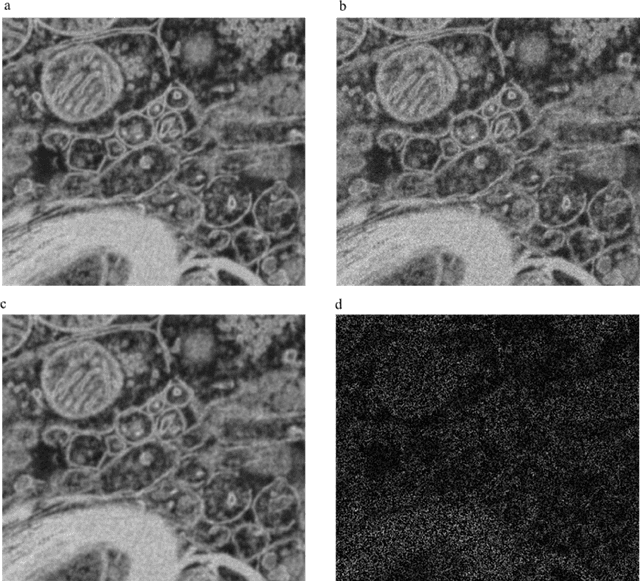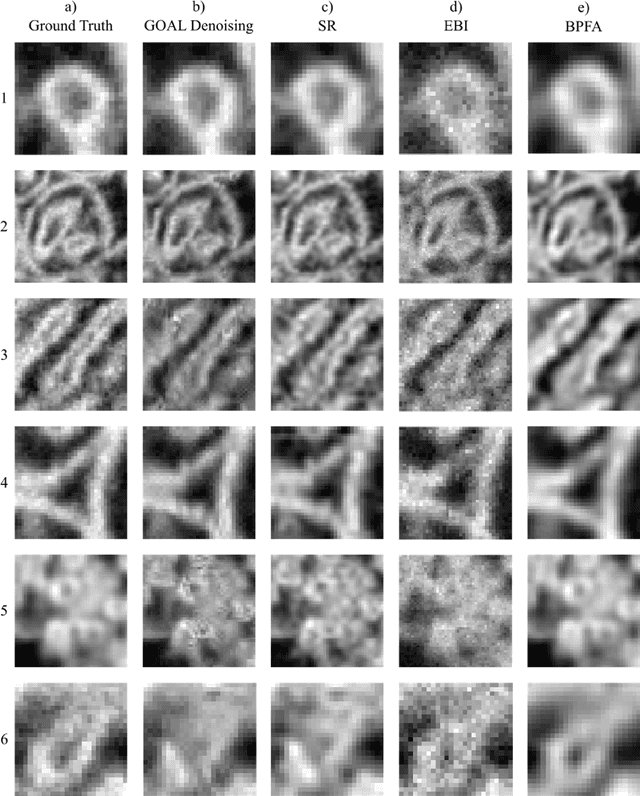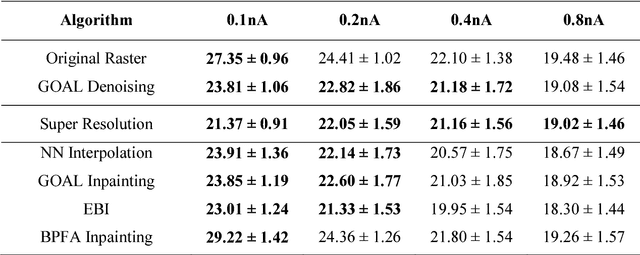Maurice Peemen
How should a fixed budget of dwell time be spent in scanning electron microscopy to optimize image quality?
Jan 12, 2018



Abstract:In scanning electron microscopy, the achievable image quality is often limited by a maximum feasible acquisition time per dataset. Particularly with regard to three-dimensional or large field-of-view imaging, a compromise must be found between a high amount of shot noise, which leads to a low signal-to-noise ratio, and excessive acquisition times. Assuming a fixed acquisition time per frame, we compared three different strategies for algorithm-assisted image acquisition in scanning electron microscopy. We evaluated (1) raster scanning with a reduced dwell time per pixel followed by a state-of-the-art Denoising algorithm, (2) raster scanning with a decreased resolution in conjunction with a state-of-the-art Super Resolution algorithm, and (3) a sparse scanning approach where a fixed percentage of pixels is visited by the beam in combination with state-of-the-art inpainting algorithms. Additionally, we considered increased beam currents for each of the strategies. The experiments showed that sparse scanning using an appropriate reconstruction technique was superior to the other strategies.
 Add to Chrome
Add to Chrome Add to Firefox
Add to Firefox Add to Edge
Add to Edge